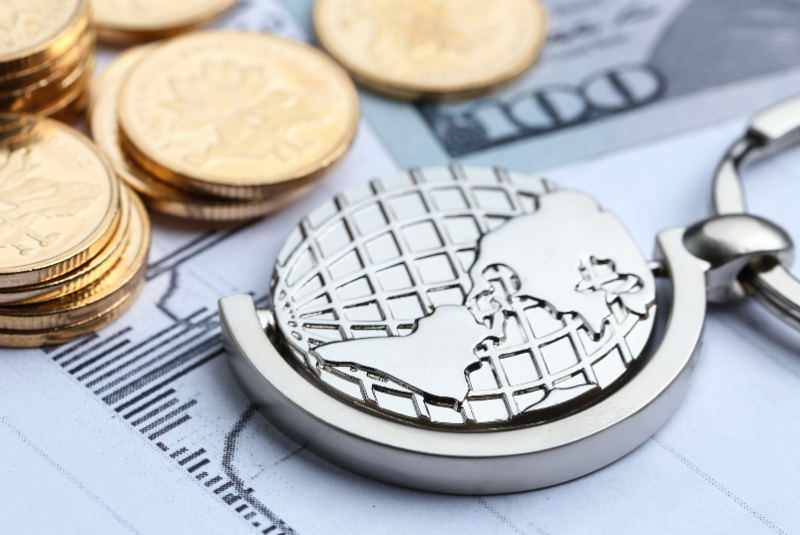@ the IERP® Global Conference, August 2024
“The second half of 2024 will be unlike any other,” said Firdaos Rosli, Chief Economist, Ambank Group, at the outset of his presentation at the IERP Global Conference 2024. The first session of the Conference covered four areas: the global economy, the major economies of the US, EU and China, the Southeast Asian economy, and Malaysia’s economy in the second half of 2024. Regardless of the incidents in the past week that have left many analysts feeling unsettled, a soft landing has been generally predicted for the global economy for this year. “Optimism prevails, and the IMF has said that everything is fine,” Firdaos said.
Global trade, while still volatile, was stabilising. The global semiconductor supply chain, while appearing choppy, was normalising as well. Global inflation, however, was still relatively elevated, with 2026 levels expected to be even higher than in the pandemic and pre-pandemic years. Oil can be expected to be at about US$80 per barrel in the ‘new’ normal. “Major economies like the US, EU and China all have different problems,” he continued. Describing the US economy as “cool and hot” he said that while its labour market was cooling steadily, its unemployment rate was 4.2%, with ongoing disinflation.
“If you look at it from the US GDP perspective, it has been trending positive in the past four quarters, and will remain so unless there is clear and present danger to growth,” he explained. Headline inflation is coming down, but services and core inflation are hot. The Producer Price Index (PPI) and Consumer Price Index (CPI) will give indications of what is coming. What may be of concern are the use of credit cards to address the cost of living in the US, and delinquent credit card loans, which are in the high double digits. “But even if the US were to cut rates, you would still see flows coming into the stock market if there is no recession, and small companies will benefit,” Firdaos said.
The EU was having growth problems. The EEC cut rates in June but raised the forecast. Inflation in the EU, as in the US, was still elevated. The EU unemployment rate was also higher than that of the US. “What could go wrong in the EU is retail and wholesale trade,” he pointed out. “People are not spending as much. In an economy where 70% of growth is based on private consumption, they should be worried.” But even with inflation and low consumer spending, tariffs on Chinese goods have been raised, which was quite puzzling, as this would make things more expensive, he said. China was also having its own set of problems.
It was not spending as much, which was not something peculiar, but the Chinese government was trying to democratise wealth. This meant lower growth rates as growth was spread out more evenly. “China’s growth has been of concern for many years but nothing has happened,” he remarked. Describing Southeast Asia as stable, he said that from a trader’s perspective, it was very boring – almost a straight line. Turning to Malaysia, he pointed out that Malaysia did not grow much in 2023, nor did it accumulate much debt, which was a positive thing. “The key points for all regions will be in 2025, not this year,” he said.
In June 2024, the World Bank upgraded its forecast from 2.6% growth in 2024 to 2.7% in 2025. This was not a substantial increase but reflected optimism in the global economy. However according to IMF projections, inflation will still be elevated in 2026; and if rates are cut, inflation will flare up. China has said it wants to grow by at least 5% a year but nobody believes it will be able to attain this in either 2024 or 2025. In complete contrast to the EU and US, the Chinese are not spending. “China’s real estate sector is in dire straits,” Firdaos said. “Residential properties are not being bought up.” Malaysia’s economy was now more correlated with China’s, not the US, he added.
This could give rise to concerns that whatever happens in China will affect Malaysia – although the outlook for Southeast Asia remains boring. Malaysia, however, was on track for higher growth; Q2 GDP may possibly reach 6%, from an initial estimate of 5.3%. “This is a good thing,” Firdaos said. “We could be one of the best-performing economies, together with the Philippines and Vietnam.” What could go wrong? Fluctuations in the prices of fuel. The government is doing a lot of supply-side adjustments; businesses will be paying more. The recent 56% increase in diesel prices overnight caught many by surprise but there was no impact on the economy.
“When things are at the real cost level, there is no alternative but to inject efficiency into your operations,” he continued. “Employers are taking the cut. They are prioritising growth over price, and as long as they continue to grow, they will be able to take the hit.” The Ringgit, despite its volatility, has been strengthening since March 2024; it is now having its best run in 14 years and is forecast to be 4.63 to US$1 in Q3. In the US, if Trump wins the presidential elections in November 2024, there will be more aggression towards everyone, Firdaos cautioned. “But we will not take a hit if we know how to capitalise on this,” he added.
Remarking that the EU had no idea what to do, apart from playing with monetary policy, he said that its fiscal policy is centred on EU members, as it had no control over anything else. China was experiencing an erosion of people’s trust about how the economy should fare, and what the economy’s trajectory should be, looking forward. In Southeast Asia, things were stable, and the outlook for Malaysia remains optimistic. “I can only hope that the narrative will continue into next year,” he concluded.


























